Dupont’s Lark Chersophilus duponti
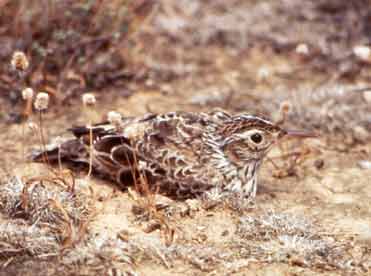
The Dupont’s Lark is scarce and localised in northeast Spain, where it is now restricted to Aragón after its recent extinction at the last site in Catalonia. The Dupont’s Lark breeds in open, dry lowland habitats and plateaux up to 1,200m.
Some birding itineraries in northeast Spain where the Dupont’s Lark may be found: Belchite steppes, Monegros Bujaraloz, Monegros Alcolea and Candasnos.
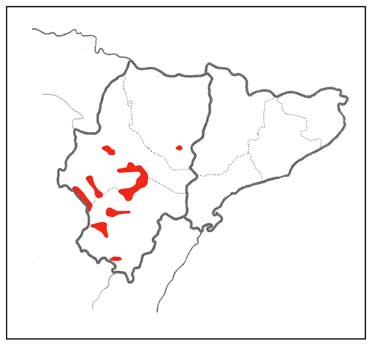
Posted in Birds in Spain | No Comments »
Got the Little Bustards!
After an evening and a morning search around alfafa fields near Lleida, following fellow birders’ last-minute reports of “more than 500 Little Bustards“, or “a flock of up to 700 birds” I finally managed to pin down a smaller, but still respectable flock of about 250 Little Bustard. Parked near a busy roundabout I stayed in the car so as not to worry the little darlings, took a photo which I knew to be of no use at all, and just enjoyed the thought that large numbers of these birds still frequent this part of Spain in the winter.
A few years ago a Little Bustard flock of about 1,300 birds was found near here, certainly the largest flock ever recorded in Catalonia, if not in Spain. This flock will have dispersed by late March or early April, but then hopefully a good number of these Little Bustards will stay around to breed on the remaining drylands of Lleida.
Posted in Birds in Spain | No Comments »
Wallcreeper Tichodroma muraria
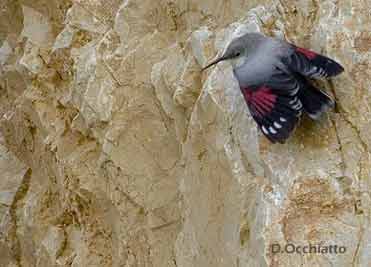
The Wallcreeper breeds in the Pyrenees of Spain on high mountain rock walls at an average altitude of 1,930 m. Between October and April most of the Wallcreeper population of northeast Spain descends to lower levels. At such times it can be found well to the south of the Pyrenees.
BirdingInSpain.com itineraries where the Wallcreeper may be found: Hecho and Ansó valleys, Benasque, Serra del Cadí, Sierra de Guara west (winter), Montsec (winter), Cap de Creus (winter).
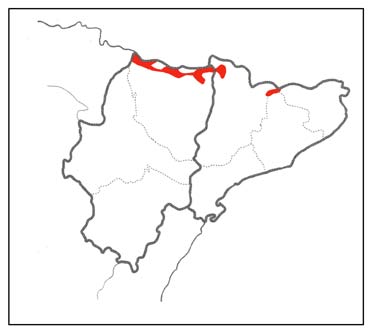
Posted in Birds in Spain | 3 Comments »
Snowfinch Montifringilla nivalis
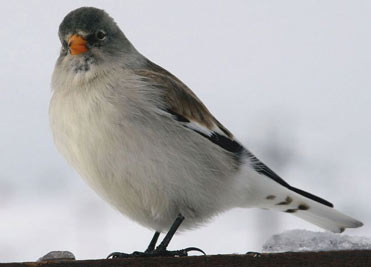
The Snowfinch breeds around alpine pastures and snowfields on rocky mountain tops at altitudes of more than 2,000m in the Pyrenees. It forms largish flocks in the winter when it can be seen out of its normal breeding range, but rarely at less than 1,400m.
Birding itineraries in the Pyrenees where the Snowfinch can be seen: Selva de Iratí and Ori, Ordesa National Park, Benasque, Serra del Cadí (winter).
Snowfinch distribution in the Pyrenees, Spain
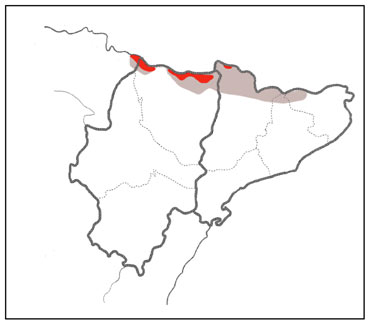
Posted in Birds in Spain | 2 Comments »
I stood on the edge of the aerodrome at Alfés, Catalonia, feeling slightly opressed by the growing darkness and the chill spring air. A dog was barking somewhere in the distance, but I couldn’t say where or how far. The noise of traffic was a soft but constant throb.
A few minutes of impatient vigil bore their fruit: a soft, mournful whistle rising and falling came to my ears. Tu-u-ee, wee-i-oo. The Dupont’s Lark. The enigmatic Dupont’s Lark singing and establishing its territory at the only known site left to the species in the whole of Catalonia.
That was several years ago now, and if my memory doesn’t fail me it was also the last time I heard the Dupont’s Lark at Alfés. In all probability it was the very last time I would ever hear the Dupont’s Lark in Catalunya. Two years ago field researchers revealed that the Dupont’s Lark was no longer breeding at Alfés. In other words it had become extinct in Catalonia.
Some local media sources spread the news with effusive, unrestrained joy. Now the small band of diehard ecologists in Lleida had one less argument to support the need for protection of the Alfés thyme fields.
Luckily, the Dupont’s Lark still breeds elsewhere in Spain. The species even has its “own” reserve at Belchite in Aragón, purchased by the Sociedad Española de Ornitología. There are also scattered populations of Dupont’s Lark in other parts of Aragón, in Guadalajara, in Almería…However, recent research has revealed gloomy findings: the population levels quoted in many sources a few years earlier were serious overestimates of the Dupont’s Lark’s real population. In reality there were probably fewer than a quarter of the previously quoted total actually living in Spain.
One February evening this year I sat inside my car, waiting for the growing darkness to spread its hold on the thyme fields of Alfés. I had my windows wound down, I could hear a Calandra Lark jingling restrainedly to itself. I waited a while and listened. I didn’t hear a Dupont’s Lark. More than likely it would have been a little too early in the season, even if the species had not disappeared from Catalonia forever.
Posted in Birds in Spain | No Comments »






